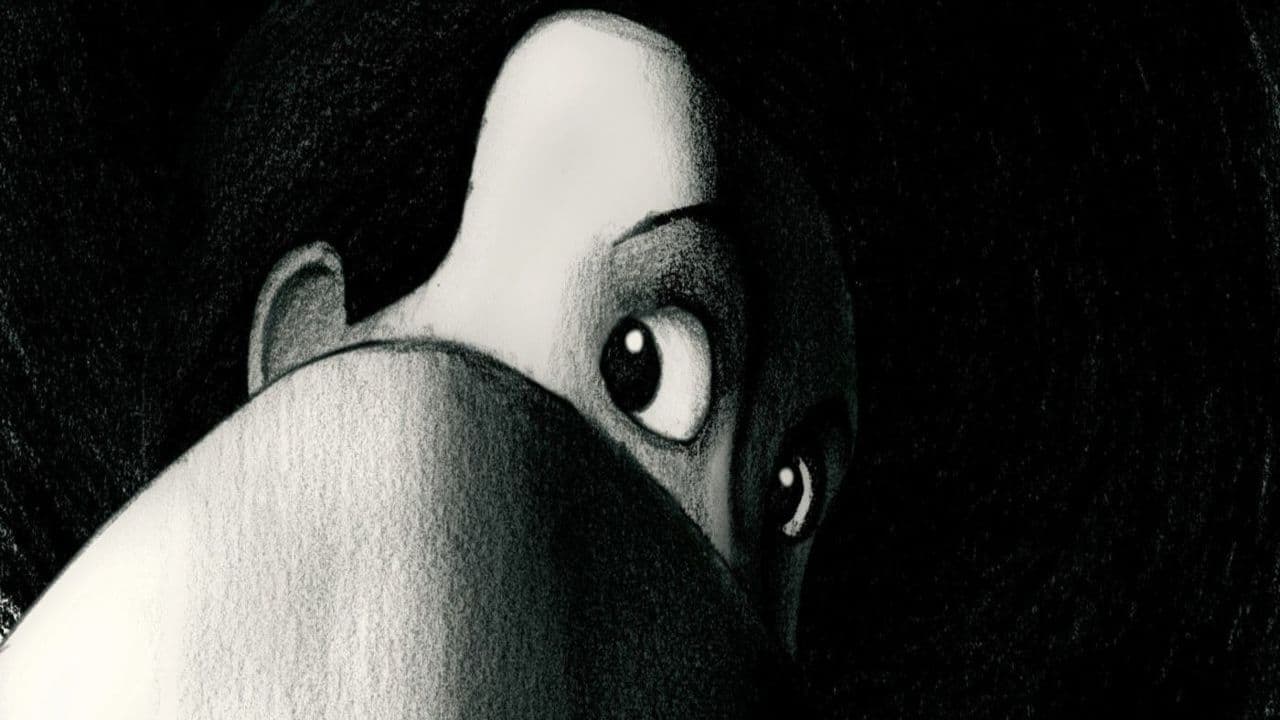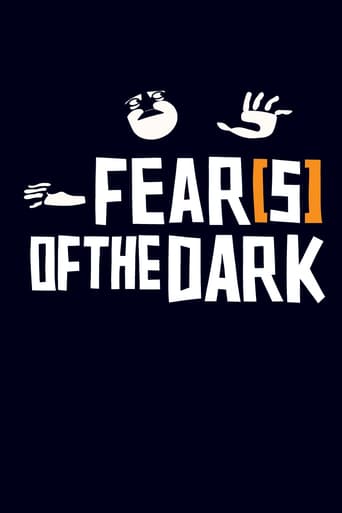



Surprisingly incoherent and boring
Boring
Instead, you get a movie that's enjoyable enough, but leaves you feeling like it could have been much, much more.
View MoreThe film makes a home in your brain and the only cure is to see it again.
View MoreThe first time I tried this, I gave up after the first sequence; the animations were disappointing (read: somewhat rigid), as was the story. But, in all honesty, there was a lack of focus on my side. Out of the two recurring themes I liked the ones with the dogs best.Years later I gave it another try, and with good results. The recurring theme with the neurotic thoughts of a French housewife with abstract animations worked just fine as an intermezzo, and the first sequence was actually very doable - rigid animations can have their charm and the story was 'fun' enough. The same goes for the second sequence (the legend of the Samurai); fun animations with some particular highlights.But then, the 'second half': sequence three (the crocodile) and four (man imprisoned in a house) were nothing short of captivating on account of the astounding animations, especially those in sequence three. The stories of these sequences were certainly doable, but for all parts I can say that they weren't the most important ingredients.A good 8 out of 10, and one I would want to see again sometime soon.
View MoreFear(s) of the Dark isn't the horror film I was hoping for. It's creepy, twisted and dark, but is also distant. It's really a portfolio of work collected by a number of talented animators. Every animation focuses on fear and nightmares in some way. Each of the individual tales has a dreamlike quality, allowing the films to avoid any responsibility they may have to tell a story. Complaining about the story may seem too harsh, but I the end I really had no connection to what was going on. The artistic skills on display can't be challenged in anyway, but so much more could have been achieved with the expansion of just one story. Certainly worth a look for some imaginative imagery.
View MoreThe trailer to this movie was very enticing--gorgeous black and white animation, sort of in the style of "Renaissance", promising Gothic horror from famous graphic artists; in this, the movie certainly doesn't disappoint. Fans of horror, animation, or film noir will definitely get their fill of high-contrast, deep-shadowed, psychological hijinks and darkened imagination. Too bad the presentation itself kind of sucks.First of all, they cut back and forth through the different shorts, for no real good reason I think except that they didn't want it to seem like just a presentation of shorts, but wanted to make the work as a whole thread together. The barbaric Frankenstein's monster that results loses a lot of its tension and beat. There are some truly horrifying moments, and the stories themselves are engaging and fun, but for the fact that they cut back and forth between them, effectively deflating a lot of the carefully built drama.Secondly, some idiot decided for the American release to transcribe the subtitles in white lettering. Whereas white lettering works great for classics of black and white cinema wherein most of the frame is variants of GRAY, in a movie made almost entirely out of half white, half black frames, only half of the subtitles can actually be read. Thankfully I know a smattering of French and was able to basically get the gist of most of it. I cannot say as much for the rest of the people in the theatre, as indicated by their grumbling. Fire whomever planned out those subtitles; I now eagerly await a DVD that comes with an English dub so that I can get the rest of what I missed.Ironically in that vein, it turns out that the quality of the shorts included is pretty much directly proportional to the amount of dialog or voice-over narration contained. The absolute best short came at the end, and was silent except for sound effects. It used brilliant negative space to create a claustrophobic terror unmatched by the rest of the shorts. The worst short was this weird sort of rectilinear Rorschach test where this woman recites a shopping list of contemporary existential fears: "I'm afraid of being bourgeois. I'm afraid of being a democrat. I'm afraid of eating too much." YUP. Definitely will keep ME awake at night. I'm just sayin'.All in all, I feel the potential for a perfectly good cinematic experience was let down by some overthinking in editing and underthinking of actual presentation. It is redeemed mostly by the singular strengths of the shorts individually, and those moments in the movie where shadows flitted tantalizingly across the screen.--PolarisDiB
View MoreAfter seeing Fear(s) of The Dark I think I can safely say I was as, or more, affected than I have ever been after watching a film. Not since the horrific denouement of Haneke's original Funny Games do I think I have even come close to being as physically shook up as I was after seeing this film. A collaboration between six graphic artists and animators, I suppose if it must be distilled into the crudest possible collision of reference points it could be summarised as Stephen King meets Waking Life (Richard Linklater's 2001 film composed of rotoscope animation vignettes) yet that doesn't come anywhere close.The artists who have visualised nightmares for this project are Philadelphia native Charles Burns, ubiquitous to graphic novel fans due to his masterly disturbing book Black Hole; former Liquid Liquid bassist Richard McGuire; Belgian resident Marie Caillou; Christian Hinckler (better known by his pseudonym Blutch), and Italian Lorenzo Mattotti. Interspersing these animated tales are kaleidoscopic dancing patterns which are, through their hypnotic abstractions, perhaps the most visually mesmerising sequences in the whole film. These patterns are set to the vacuous middle-class fears and worries of a bourgeois woman, and the insubstantiality of her worries sets a theme which extends throughout the film. None of the fears represented in any of the narrative threads are viable. They are all tales of terror which one wouldn't have been surprised to find lurking in a battered Goosebumps paperback in the late nineties. This doesn't matter, though, because the film's power lies in its incredibly paced orchestrations of image and sound.After a joyously Gothic title sequence in which the film's name flashes on the screen at least five times (in a barrage of words reminiscent of Godard at his most poetically despotic) we are presented with an introduction to Blutch's storyline, which extends throughout the film. A hellish figure dressed in the clothes of a 18th century dandy roams a barren landscape with a pack of ferocious canines, hunting down unsuspecting victims and then proceeding to violently rip them apart (the last of which is a remarkably gory sequence). Ironically, considering the content of these scenes, Blutch's animation style is most reminiscent of either Raymond Briggs (In the constant shimmering of his charcoal textures) or the Walt Disney studios house style (In the fluidity of his characters' movements). Charles Burns and Lorenzo Mattotti present two sequences which are most reminiscent of scary bed-time stories, both being narrated in first-person. Visually, though, they couldn't be more different. Charles Burns' is, as you might imagine, the most like a moving graphic novel. The art is unmistakeably his, very clean-cut black lines without any grey, and the pictures tell the story of a conscientious student who embarks on a love affair with a girl which descends into an insectoid hell in a methodical, coherent style. Mattotti, on the other hand, tells the story of an eerie beast terrorising a small pastoral community in a free-and-easy sketchy style, with images that swim in and out of view like a dream.This is not the best representation of a bad dream within the film, though. That accolade goes to Marie Caillou, who presents to us an Oriental phantasm. A macabre inversion of a Studio Ghibli fantasy which gets more surreal as it proceeds, a young girl is tormented by dangers both real and imaginary. Not since The Mystery Man talked to Bill Pullman at the party in Lost Highway has a nightmare been so well orated on screen and it had a large majority of the audience locked in a collective terror. While Caillou's segment had an undeniable effect on the viewers, the last sequence, by Richard McGuire, is perhaps the most powerful of them all. Employing nothing but block black-and-white shapes to tell the story of a man who is haunted in a house by a mysterious woman, for the most part of his segment he eschews all non-diegetic music. The audience is thereby made extremely sensitive to every single movement made by the objects on screen and so the slightest motion, such as a hat-box dropping to the floor, causes the heart to skip a beat.
View More